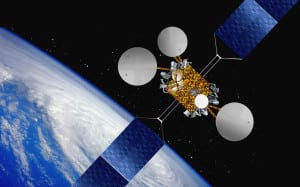Satellite IRG Completes Series of Carrier ID Transmission Tests
[Via Satellite 06-26-2015] Satellite Interference Reduction Group (IRG) members Work Microwave, Eutelsat and IABG completed three Carrier ID (CID) transmission tests June 17 and 18. The tests evaluated both modulation and demodulation capabilities in a number of real life scenarios, ensuring products, technology and processes available are capable of transmitting, detecting and resolving interference.
Carrier ID is a unique identifier inserted into a carrier to accelerate identification of satellite interference. The CID transmission tests ran using Work Microwave’s Digital Video Broadcast-Satellite Second Generation (DVB-S2) modulator, which includes DVB-CID technology. Eutelsat made capacity available to Work Microwave on the Eutelsat 21B satellite — whose pan-European coverage ensured that other members could participate, including satellite operators (Arabsat, Es’hailSat, Intelsat), carrier monitoring system manufacturers (Comtech EF Data, Kratos SAT Corporation, Siemens Convergence Creators, Zodiac Aerospace) and the monitoring Earth station in Aflenz, Austria.
The Scenario 1 test gauged the robustness to constellation variation by using different modulation techniques of the DVB carrier. The participating companies identified no difference in processing capabilities between the different techniques.
Scenario 2 involved lowering the transmission power to simulate Adjacent Satellite Interference (ASI) and cross-polar interference (XPOL). When the power was down to a 4dB Signal to Noise Ratio (SNR), the detection time remained unchanged. At 1dB SNR, this was affected by around 60 seconds.
Scenario 3 tested a real interference case, where both carriers had ID and the companies participating were able to detect the Carrier ID of both the main carrier and the interfering carrier.
